Related Research Articles

Sweetwater is a municipality in and the seat of Nolan County, Texas, United States. It is 123 miles southeast of Lubbock and 40 miles west of Abilene, Texas. Its population was 10,906 at the 2010 census.

Jacqueline Cochran was an American pilot and business executive. She pioneered women's aviation as one of the most prominent racing pilots of her generation. She set numerous records and was the first woman to break the sound barrier on 18 May 1953. Cochran was the wartime head of the Women Airforce Service Pilots (WASP) (1943–1944), which employed about 1000 civilian American women in a non-combat role to ferry planes from factories to port cities. Cochran was later a sponsor of the Mercury 13 women astronaut program.
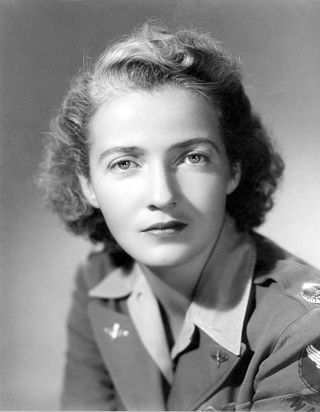
Nancy Harkness Love, born Hannah Lincoln Harkness, was an American pilot and airplane commander during World War II. She earned her pilot's license at age 16. She worked as a test pilot and air racer in the 1930s. During World War II she convinced Colonel William H. Tunner of the U.S. Army Air Forces to look to set up a group of female pilots to ferry aircraft from factories to air bases. This proposal was eventually approved as the Women's Auxiliary Ferrying Squadron. Love commanded this unit and later all ferrying operations in the newly formed Women Airforce Service Pilots. She was awarded the Air Medal for her work during the war and was appointed lieutenant colonel in the US Air Force Reserve in 1948.

The Women Airforce Service Pilots (WASP) was a civilian women pilots' organization, whose members were United States federal civil service employees. Members of WASP became trained pilots who tested aircraft, ferried aircraft, and trained other pilots. Their purpose was to free male pilots for combat roles during World War II. Despite various members of the armed forces being involved in the creation of the program, the WASP and its members had no military standing.

Hazel Ying Lee was an American pilot who flew for the Women Airforce Service Pilots (WASP) during World War II.

Cornelia Clark Fort was a United States aviator who became famous for being part of two aviation-related events. The first occurred while conducting a civilian training flight at Pearl Harbor on December 7, 1941, when she was the first United States pilot to encounter the Japanese air fleet during the Attack on Pearl Harbor. She and her student narrowly escaped a mid-air collision with the Japanese aircraft and a strafing attack after making an emergency landing.

Betty Gillies was an American aviator, and the first pilot to qualify for the Women's Auxiliary Ferrying Squadron, later amalgamated into the Women Airforce Service Pilots.
Evelyn Genevieve "Sharpie" Sharp was an American aviator. She was a member of the Women Airforce Service Pilots (WASP). Sharp died at age 24, when the plane she was flying lost an engine during takeoff.
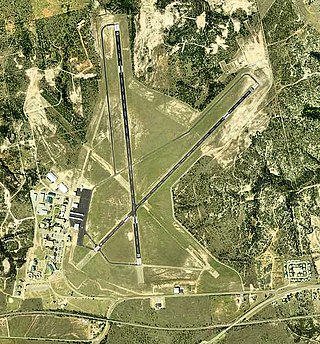
Avenger Field is a Texas airport in Nolan County, three miles west of Sweetwater. The National Plan of Integrated Airport Systems for 2011–2015 called it a general aviation facility.
The Women's Flying Training Detachment was a group of women pilots during World War II. Their main job was to take over male pilot's jobs, such as ferrying planes from factories to United States Army Air Force installations, in order to free male pilots to fight overseas. They later merged with the Women Airforce Ferrying Squadron to form the Women Airforce Service Pilots.
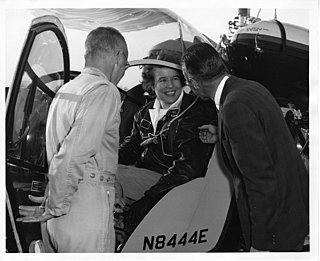
Dora Jean Dougherty Strother was an American aviator best known as a Woman Airforce Service Pilots (WASP) and B-29 Superfortress demonstration pilot. She was a U.S. military pilot, human factors engineer with Bell Aircraft, instructor at the University of Illinois and helicopter test pilot for Bell Aircraft.

Elizabeth Maxine Chambers was one of the first female pilots in the Women Airforce Service Pilots (WASP) program in which women took on non-combat flying duties so more male pilots were available for combat. She was in WASP Class of 44-W-3 as part of the 318th Army Air Forces Flying Training Detachment. She became a pilot shortly after her husband lost his life while flying, despite the fact that she had a new baby, and was the only recent widow and mother to have served as a WASP.
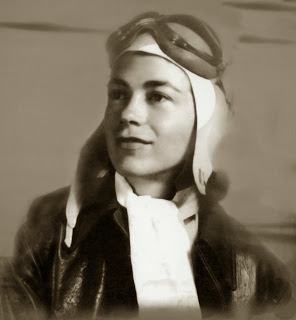
Dorothy Swain Lewis was an American aviator who trained Navy pilots and flew with the Women Airforce Service Pilots (WASP) program during World War II. She was also an artist who created a series of cast-bronze sculptures of WASP pilots for various World War II memorial sites.

Bernice "Bee" S. Falk Haydu was an American aviator and served as a Women Airforce Service Pilot (WASP) in World War II. Haydu remained active in aviation and remained an advocate for women pilots.

Hazel Jane Raines was an American pioneer aviator and flight instructor with the Civilian Pilot Training Program. During World War II, she was part of the first group of United States women to fly military aircraft, which they did in a war zone for the civilian British Air Transport Auxiliary. She was later a member of the civilian contract labor Women Airforce Service Pilots. After the war, she taught instrument training in Brazil. When President Harry S. Truman authorized the integration of women into the military, she served with Women in the Air Force and was based in Texas, Alabama, and finally London until her death. Raines was the first woman in Georgia to earn a pilot's license, and has been inducted into both the Georgia Aviation Hall of Fame and the Georgia Women of Achievement.
Nadine Bernice Ramsey (1911–1997) was an American aviator who became one of the first two women to fly mail for the US Postal Service. She was a Women Airforce Service Pilot and one of only twenty-six WASPs to pilot a Lockheed P-38 Lightning during World War II.

Dorothy Eleanor Olsen was an American aircraft pilot and member of the Women Airforce Service Pilots (WASPs) in World War II.
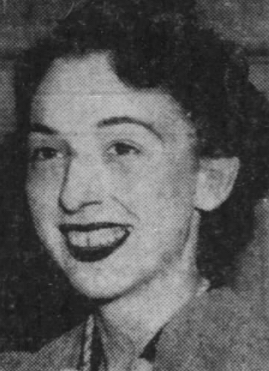
Gwendolyne Elizabeth Cowart was an American pilot who served as a Women Airforce Service Pilot (WASP) during World War II.

Mabel Virginia Rawlinson served with the Women Airforce Service Pilots (WASP) during World War II as one of 1,102 women to earn Silver Wings. When died in an airplane crash during advanced night training, she became one of the 38 women who died while serving with the Women Airforce Service Pilots (WASP).

Marion Stegeman Hodgson (1921-2016) was one of the first women to train as a military pilot in the United States. Her 1996 autobiography Winning My Wings: A Woman Airforce Service Pilot in World War II was praised for its unique insight into the Women Airforce Service Pilots program in World War II. Her post-war work writing for magazines and newspapers helped bring to attention the fact that Women Airforce Service Pilots were never considered veterans of the war. Hodgson has been inducted into aviation halls of fame in Texas and Georgia.
References
- 1 2 3 Rickman 2016, p. 51.
- 1 2 3 "Leoti Deaton Inspired the Best in Community". Wichita Falls Times. 12 February 1986. Retrieved 10 March 2020– via The Portal to Texas History.
- 1 2 "Civic Leader Deaton Dies". Wichita Falls Record News. 12 February 1986. Retrieved 10 March 2020– via The Portal to Texas History. and "Leoti Deaton Dies at 82". Wichita Falls Record News. 12 February 1986. p. 2A. Retrieved 10 March 2020– via The Portal to Texas History.
- 1 2 3 4 5 6 Tanner, Doris Brinker (25 September 1986). "Deaton Introduced WASPs to Sweetwater". Sweetwater Reporter. Retrieved 10 March 2020– via The Portal to Texas History.
- ↑ Rickman 2016, p. 51-52.
- ↑ "Wichita Falls Woman is Helping 'Keep 'Em Flying'". Fort Worth Star-Telegram. 1943-07-20. p. 7. Retrieved 2020-03-12– via Newspapers.com.
- ↑ Teitel, Amy Shira (2020-02-18). Fighting for Space: Two Pilots and Their Historic Battle for Female Spaceflight. Grand Central Publishing. ISBN 978-1-5387-1603-8.
- ↑ "WASPs Dedicate Fifinella Statue". Fort Worth Star-Telegram. 1976-06-15. p. 6. Retrieved 2020-03-09– via Newspapers.com.
- 1 2 "Mrs. Leoti Deaton". Victoria Advocate. 1986-02-15. p. 16. Retrieved 2020-03-09– via Newspapers.com.
Sources
- Rickman, Sarah Byrn (2016). WASP of the Ferry Command: Women Pilots, Uncommon Deeds. Denton, Texas: University of North Texas Press. ISBN 978-1-57441-6374..